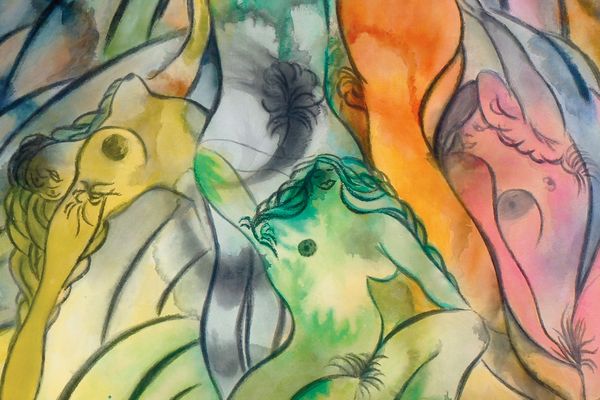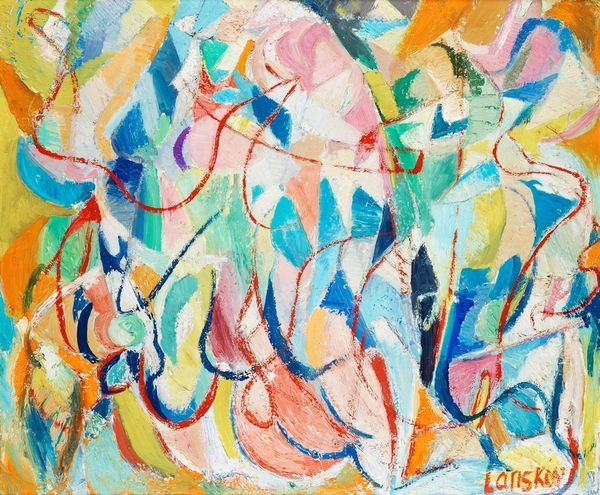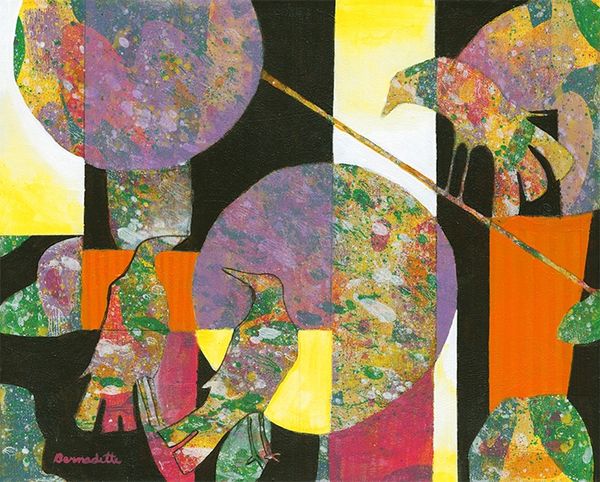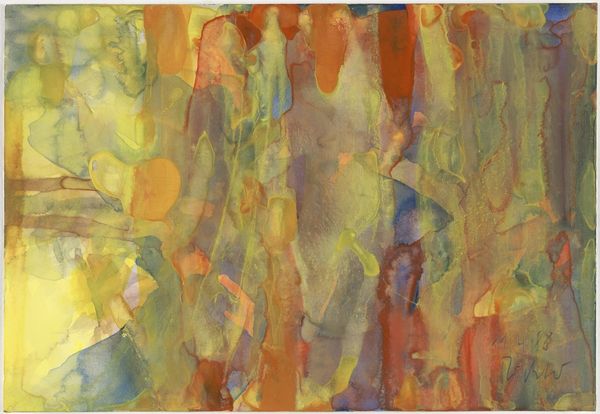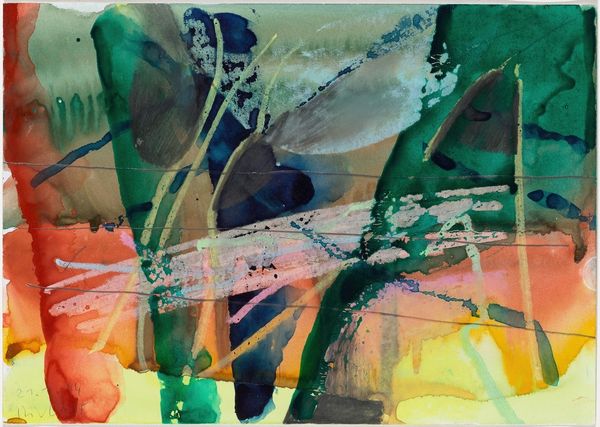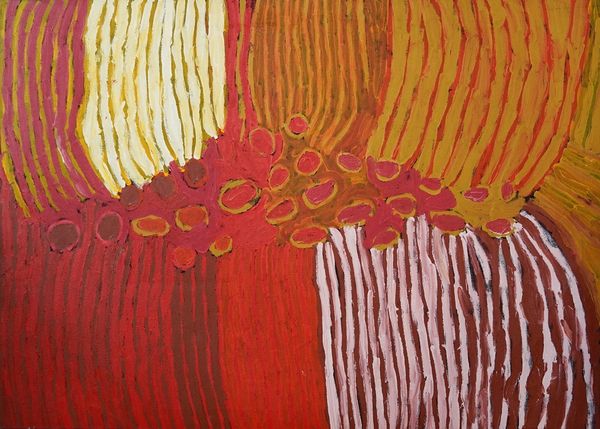
painting, plein-air, oil-paint, impasto
#
fauvism
#
fauvism
#
painting
#
plein-air
#
oil-paint
#
landscape
#
figuration
#
impasto
#
geometric
#
naive art
#
painting art
#
botany
Copyright: Public domain
Editor: This is Arman Manookian's painting, "Hawaiian Flowers." It seems to be oil on canvas, though the date is unknown. There's a naive quality to it, almost geometric. I find the palette and the boldness of shapes particularly striking, how everything interlocks. What do you see in this piece? Curator: I notice the obvious influence of Fauvism. The high-key colors and flattened perspective directly reference that turn-of-the-century style, but it's more than just stylistic mimicry. Consider the context: Manookian, an Armenian artist, painted this while working as a commercial artist in Hawai'i. Editor: How does that background change our perspective? Curator: It reframes the image. Think about the promotion of Hawai'i as a tropical paradise during the early 20th century, fueled by tourism. This painting, with its vivid colours, aligns with that constructed image, perhaps intended to evoke a sense of exoticism for mainland audiences. The impasto adds texture and evokes lush growth. But, what do we lose when reducing a place to an idyllic escape? Editor: We lose nuance, authenticity, the struggles of native populations. It simplifies a complex reality into a consumable image. It’s a visual marketing, really. Curator: Precisely. So, while "Hawaiian Flowers" appears to be a simple, vibrant landscape, it prompts deeper questions about the relationship between art, commerce, and cultural representation. The artist’s hand is less important than the systems of meaning at play. Editor: I never would have thought to consider that! It’s fascinating how understanding the history and the location in the artwork allows us to dissect its deeper implications. Curator: It adds to our knowledge. The visual pleasure doesn't necessarily negate the historical context. It enriches it.
Comments
No comments
Be the first to comment and join the conversation on the ultimate creative platform.



